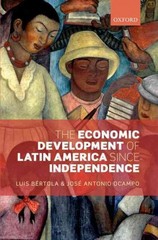Question
Draw your graphs. Draw a basic market graph for each headline you chose. You should have two graphs, where each focuses on one product market.
- Draw your graphs. Draw a basic market graph for each headline you chose. You should have two graphs, where each focuses on one product market. Title each graph with the market for the product affected in your news headline, such as "Market for Orange Juice." In each graph, label the axes, curves, equilibrium price "Pe," and equilibrium quantity "Qe." Note: The headlines you chose might reference or imply more than one good or service. However, you will interpret the impact on just one product market for each headline. As long as your graphs are reasonable for your chosen headlines, your work should be acceptable.
- Add the shift in each graph. Draw a new curve on each of your graphs to reflect the shift in either supply or demand. Label it D1 or S1, accordingly. Label the new equilibrium price P1 and the new equilibrium quantity Q1. Add arrows to show the direction of the changes in the curve, price, and quantity.
- Explain the outcomes. In a complete paragraph for each graph, explain how your graph illustrates the news event. Describe what changed and why. Include the one element of either TRIBE or ROTTEN that best explains the shift. Describe how this led to the market outcomes for equilibrium price and quantity. You will have two paragraphs, one for each graph.
I have this so far -
Market for Oil and Tire Change Services:
In response to the news headline "As more Americans hold on to older vehicles longer, oil and tire change service shops see boom in profits," we can analyze the market for oil and tire change services. This headline indicates a rise in demand for these services as people are keeping their vehicles for longer periods of time. Therefore, the demand curve for oil and tire change services shifts to the right, from D to D1, as shown in the graph. This shift results in an increase in both the equilibrium price and quantity, from Pe to P1 and Qe to Q1, respectively. The shift in demand occurs due to a change in consumer preferences and behavior, with people now preferring to maintain their vehicles instead of replacing them. This shift in demand results in higher profits for oil and tire change service shops as they can charge a higher price for their services, while also providing more services to meet the increased demand.
Market for Automobiles:
The news headline "Semiconductor chip shortage woes: automobile manufacturers warn of delays in production and higher prices" affects the market for automobiles. The semiconductor chip shortage has led to a decrease in the supply of automobiles, resulting in a leftward shift of the supply curve, from S to S1. As a result, the equilibrium price of automobiles increases from Pe to P1, while the equilibrium quantity decreases from Qe to Q1. This shift in supply occurs due to external factors that have limited the ability of automobile manufacturers to produce cars. This has led to higher costs of production and lower output, leading to an increase in the equilibrium price of automobiles. This shift has led to a decrease in consumer surplus and increased the profits of automobile manufacturers. Additionally, this shift in supply has led to a decrease in social welfare, as fewer cars are being produced and sold, resulting in a loss of benefits to society.
Step by Step Solution
There are 3 Steps involved in it
Step: 1

Get Instant Access to Expert-Tailored Solutions
See step-by-step solutions with expert insights and AI powered tools for academic success
Step: 2

Step: 3

Ace Your Homework with AI
Get the answers you need in no time with our AI-driven, step-by-step assistance
Get Started


